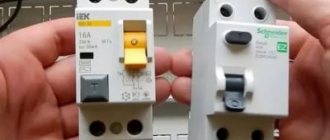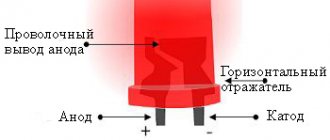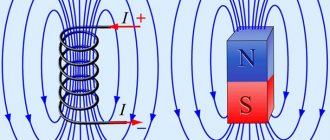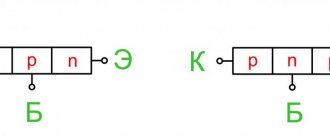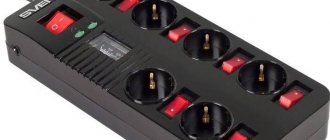Yes, of course, there are many differences between copper and aluminum when used in electrical installations, such as conductivity, weight, and, one of the most important factors, cost. In the last century, aluminum was a more common metal for making electrical products such as fuses, busbars, circuit breakers, and was used for laying internal networks in residential and industrial buildings. Under the influence of modern trends, many designers have actively replaced aluminum with copper in their products, but recently trends have changed again, and they are moving from copper back to aluminum. The reason for this transition is the high cost of copper.
History of discovery
Copper is one of the first metals that humanity learned to mine and exploit; According to archaeologists, around the same time as copper, people began to use gold. The fact is that both of these metals occur in nature in their native form, and a piece of copper in order to be used as a tool or weapon simply had to be given the desired shape after heating. This happened, most likely, 6-7 thousand years ago. Gradually, people learned to smelt metal from ore, and slag, indicating the presence of copper metallurgy, was found during excavations of the ancient settlement of Çatalhöyük in Turkey. Initially, weapons and agricultural tools were made from pure metal, but over time, people discovered that when combined with tin, copper produced much stronger bronze.
The difference between aluminum and copper is that the date of its first production is clearly recorded in history. This happened in 1825 in Denmark and the “father” of aluminum was the chemist Hans Oersted. Aluminum does not occur in nature in its native form, but when interacting with oxygen it forms a stable compound, so its production was initially very expensive. The first aluminum was more expensive than gold, and in 1889 the British presented the great Russian chemist Dmitry Mendeleev with scales made of gold and aluminum as a sign of recognition of his services to humanity.
Table
The difference between aluminum and copper can be seen in the table below.
| Copper | Aluminum | |
| "Experience" of human use | 6-7 thousand years | Since 1825 |
| Main Applications | Electrical engineering, production of quality pipes, some other industries | Electrical engineering, aircraft construction, creation of light load-bearing structures (alloys), food industry, other industries |
| Density | 8.92 g/cm3 | 2.6989 g/cm3 |
| Electrical conductivity (at 20 °C) | 59500000 cm/m | 38000000 cm/m |
| Melting temperature | +1356 °C | +660 °С |
Comparison
The electrical conductivity of copper is one and a half times higher than that of aluminum, but the density of aluminum is 3.3 times less than that of copper. There is no need to talk about the price - after the development of industrial technology for the production of aluminum, its cost has fallen very much and now it is significantly less than that of copper. These circumstances predetermined the use of aluminum for the production of multi-core wires and cables. Please note when you see high voltage power lines: all wires are made of aluminum. It’s cheaper this way and the load on the supports is much lower. Well, if the electrical conductivity is less, you have to put up with it.
Copper is also used to produce bronze. In ancient times, bladed weapons and tools were made from it until iron smelting was mastered. But later, guns were cast from bronze, and this continued for quite a long time, until the 19th century. The Tsar Cannon and the Tsar Bell were cast from bronze. In addition, due to its high corrosion resistance, copper has found application in the manufacture of pipes for transporting various liquids and gases, as well as in some other industries.
Aluminum is called the “winged metal”. This name speaks of the second large-scale area of its application (after electrical engineering). When aluminum (95.6%) and copper (4.4%) are combined, an alloy is obtained, which is called duralumin, or duralumin. Having a density close to that of aluminum, it has significantly higher strength characteristics, which is why it is widely used for aircraft production.
Useful tips
The wire connection must comply with safety regulations
The cable layout in the apartment consists of an upper and lower level. The lower one has sockets designed to power consumers, the power of which can reach 2 kW: washing machines, boilers, microwave ovens. In order not to expose the lines to the risk of overheating and burning, it is advisable to install a copper cable with the maximum cross-section of conductors allowed for household outlets.
The upper level is used to power doorbells, ceiling and wall lamps. These products consume a minimal amount of electricity, especially if they are equipped with modern LED lamps. You can run a thin and inexpensive aluminum cable on top, the power reserve of which is sufficient with a large reserve. With this solution, a separate issue arises of a safe way to join two incompatible metals.
Conductive paste
To avoid problems with contacts after installation, you can use one of the following devices:
- Clamp. The product consists of 3 steel plates. The cores are inserted between them, after which the plates are tightened with bolts.
- Bolt with 2 iron washers. The ends of the cores are twisted into rings and placed on the axle, and washers are installed between different materials. Tightening the nut ensures reliable contact.
- Spring switch. Its terminals are treated with a special anti-corrosion lubricant. The cores are inserted into the grooves and secured with spring levers.
- Pads. They are a steel strip with contacts pressed into a plastic case. The ends of the cable are inserted into the holes where they are tightened with bolts. The products can be used to connect 2-10 pairs of wires.
How to distinguish copper from other metals
For most of us, knowledge about copper and its properties is limited to a school chemistry course, which is quite enough at the everyday level. However, sometimes there is a need to reliably determine whether a material is a pure element, an alloy, or even a composite material. The opinion that this information is needed only by those who are engaged in the acceptance or delivery of scrap metal is erroneous: for example, on amateur radio forums, topics are often raised about how to distinguish copper in wires from copper-plated aluminum.
Flaws
There are quite a few disadvantages to this type of wire:
- Metal fluidity. Aluminum tends to stretch, this has a negative consequence in the case of screw connections of wires. Wire connections weaken over time, begin to heat up, oxidize and burn, until contact is completely lost.
- Aluminum fragility. During the process of aging and long service life, the wires will simply break, especially with frequent loads and overheating. This also needs to be taken into account when you re-terminate old strands - when unwinding and re-twisting them, there is a high risk that the core will break.
All of these shortcomings, to one degree or another, ultimately lead to the fragility of the entire power supply system and a short service life. When asked how long aluminum electrical wiring lasts, you will receive a comprehensive answer - as long as its insulation lasts. Depending on the conditions and installation method, the service life is 5-25 years.
Briefly about element No. 29
Pure copper (Cu) is a golden-pink metal with high ductility, thermal and electrical conductivity. Chemical inertness in an ordinary non-aggressive environment is ensured by a thin oxide film, which gives the metal an intense reddish tint.
The main difference between copper and other metals is color.
. In fact, there are not so many colored metals: only gold, cesium and osmium are similar in appearance, and all elements included in the group of non-ferrous metals (iron, tin, lead, aluminum, zinc, magnesium and nickel) have a gray color with varying intensity of shine.
An absolute guarantee of the chemical composition of any material can be obtained only through spectral analysis. The equipment for carrying it out is very expensive, and even many expert laboratories can only dream of it. However, there are many ways to distinguish copper at home.
with a high degree of probability.
Determination by color
So, we have before us a piece of unknown material that needs to be identified as copper. The emphasis on the term “material” rather than “metal” was made specifically, since recently many composites have appeared that are very similar to metals in appearance and tactile sensations.
First of all, we consider color. It is advisable to do this in daylight or “warm” LED lighting (under “cool” LEDs, the reddish tint changes to yellow-green). It is ideal if there is a copper plate or wire for comparison - in this case, errors in color perception are practically eliminated.
Important: old copper products can be covered with an oxidized layer (a greenish-blue loose coating): in this case, the color of the metal must be looked at in a cut or saw cut.
Determination by magnet
Color matching is a reliable but not sufficient method of identification. The second step of independent experiments will be a test with a magnet. Chemically pure copper is classified as diamagnetic - i.e. to substances that do not respond to magnetic influence. If the material under study is attracted to a magnet, then it is an alloy in which the content of the main substance is no more than 50%. However, even if the sample did not react to the magnet, it is too early to rejoice, since often an aluminum base is hidden under the copper coating, which is also not magnetic (this can be eliminated by filing or cutting).
How to distinguish between copper and its alloys?
Copper alloys are widely used in industry. Over many years of research, it has been possible to obtain many materials with unique properties: high ductility, electrical conductivity, chemical resistance, strength (all depends on alloying additives). The most common are bronze (with the addition of tin, aluminum, silicon, manganese, lead and beryllium), brass (with the addition of 10-45% zinc), as well as copper-nickel alloys (nickel silver, cupronickel, copel, manganin).
Only bronze and brass are difficult to identify, since copper-nickel alloys differ significantly in color due to their low copper content.
Copper or brass?
Brass can contain from 10 to 45% zinc, a silver-gray metal. Naturally, the more zinc, the paler the alloy. However, high-copper brasses, in which the amount of additives does not exceed 10%, differ little in color from the copper sample. In this case, you can only trust your feelings: brass is much harder and more difficult to bend (for greater reliability, a comparison with a reference sample is advisable). You can try to remove the shavings: copper shavings will have a curl shape, brass shavings will be straight, needle-shaped. When the samples are placed in a solution of hydrochloric acid, no reaction with copper is observed, and a white coating of zinc chloride forms on the surface of the brass.
Copper or bronze?
Like brass, bronze is much stronger, which is explained by the presence of harder metals in the alloy. The most reliable test will be a “tooth test” - there is unlikely to be a trace of pressure left on the surface of the bronze.
You can also experiment with a hot saline solution (200 g of table salt per 1 liter of water). After 10-15 minutes, a copper sample will acquire a more intense shade than a bronze one.
For those familiar with electrical engineering
Very often, copper cores from electrical cables are sold as scrap non-ferrous metals, and there are often cases when copper-coated aluminum is used in the production of electrical products. This material has a significantly lower density, but due to its irregular geometric shape, determining the volume to calculate the density is quite difficult. In this case, copper can be determined by electrical resistance (of course, if you have the appropriate instruments - a voltmeter, ammeter, rheostat). We measure the cross-section and length of the core, take instrument readings, and Ohm’s law will help you. Resistivity is a fairly accurate characteristic by which any metal can be identified with a high degree of reliability.
Why you can’t connect old aluminum wiring and copper wires
During long-term operation, it becomes necessary to replace part of the electrical cable. Also, during the repair, additional branching of the wiring is carried out in order to obtain additional power supply points.
In this situation, it becomes necessary to join aluminum and copper elements.
The connection problem is due to two factors:
- Different resistivity of two metals. Even reliable twisting will be subject to external influences due to the greater thermal expansion of aluminum.
- Presence of oxide films. Both substances have such elements, but have different resistance. This further increases the temperature at the junction.
When operating under load, sparking appears at the point of contact, which prevents normal current conduction and creates conditions for a fire to occur.
Despite this situation, the connection of copper and aluminum is possible. For this purpose, special technological techniques are used:
- tinning using a soldering iron and solder - suitable for processing copper wire;
- lubricant - a special lubricant is used to prevent oxidation of the metal at the point of contact;
- use of metal adapters.
Among the representatives of the latter group the following devices are known:
- Nut-type connections. They are three parallel plates, where different wires are laid between two adjacent elements. The connection is placed in a plastic box.
- Terminal blocks. A common and inexpensive method. When laying wires on both sides, you should just avoid touching each other inside.
- Bolted connection. This method is distinguished by its simplicity of design and the inaccessibility of other methods. The two conductors are separated from each other by washers of suitable diameter, mounted on a bolt.
- Spring terminals. It is advisable to use the finished product during installation. The method is characterized by simplicity and reliability of fastening.
Any method allows you to avoid possible twisting of wires, and increases safety when using electrical energy.
Copper or Aluminum: Which is Best for Wiring?
Nowadays, the vast majority of electricians use copper wiring instead of aluminum. But why? Why is copper better than aluminum? The answer is in our article.
In the USSR, all wiring was aluminum, but in modern new buildings you will no longer see such wiring. But why is copper better than aluminum? Which wiring is better for your home: copper or aluminum? We tell you why the material of the wires changed so quickly and irrevocably.
What kind of wiring should be done in the apartment?
In the past, most home wiring consisted of aluminum. The power was small, and there were only a few electrical appliances. Technology developed, devices became more powerful, which increased the requirements for wiring and insulating materials. The PUE states that residential premises must be equipped with copper wiring.
Advantages and disadvantages of aluminum
Lower density means lower mass. If the load is planned to be small, it can still be used for simple networks.
The superiority of aluminum over copper for power lines
But aluminum is not retired at all: overhead power lines are still made of this metal. So it also has advantages? Certainly!
Weight
Weight is largely determined based on the density of the metal. The higher the density, the heavier the conductor. The density of copper is 8900 kg/m3, and that of aluminum is 2700 kg/m3. That is, with an equal volume, a copper wire will weigh 3.3 times more than aluminum. For home wiring this is not critical, since the wire lies in the grooves, but for overhead power lines this is an important indicator. That is why aluminum wire is used for overhead power lines.
Let's go back to our time
Aluminum wires
They are cheaper than copper ones, but they have a number of disadvantages. Aluminum oxidizes faster when interacting with air, has lower electrical conductivity, is fragile and is susceptible to bending (crumbs). So if the wiring in your house is made of aluminum, I advise you to replace it with copper as it is more durable, resistant, and, in addition, less susceptible to corrosion.
Which cable should you buy for your apartment?
Suitable household cables are PVS, NYM, VVG and VVG with the index “NG”.
The service life of the VVG cable according to GOST 16442-80 is at least 30 years
PVA is a copper power cable
with twisted cores and round cross-section. It is used, in particular, for the manufacture of extension cords, as well as for connecting household electrical appliances and power tools. The conductor is made of annealed copper wire of increased flexibility, and the sheath and insulation are made of PVC plastic. PVA cable insulation comes in two colors: black and white.
At NYM cable
There is an additional layer of chalk rubber insulation, which prevents the appearance of cracks during operation in unfavorable conditions. The external insulation is made of elastic plastic (this increases electrical safety). This cable is intended for electrical installations and indoor wiring.
By clicking on the picture with the wire you can see extended technical specifications
VVG - power cable
, which is used for transmission and distribution of electricity in stationary installations (voltage should be 0.66 and 1 kV, and ambient temperature should be from -50 degrees Celsius to +50 degrees Celsius). The bending radius when laying the cable should not be less than 6 cable diameters. The conductor is made of copper or aluminum, the insulation is made of PVC plastic, the sheath is made of PVC plastic

